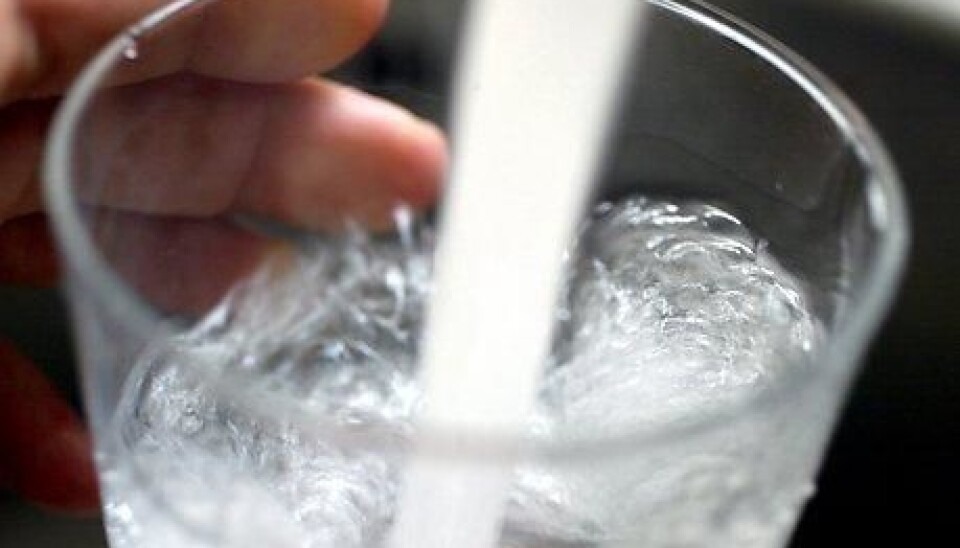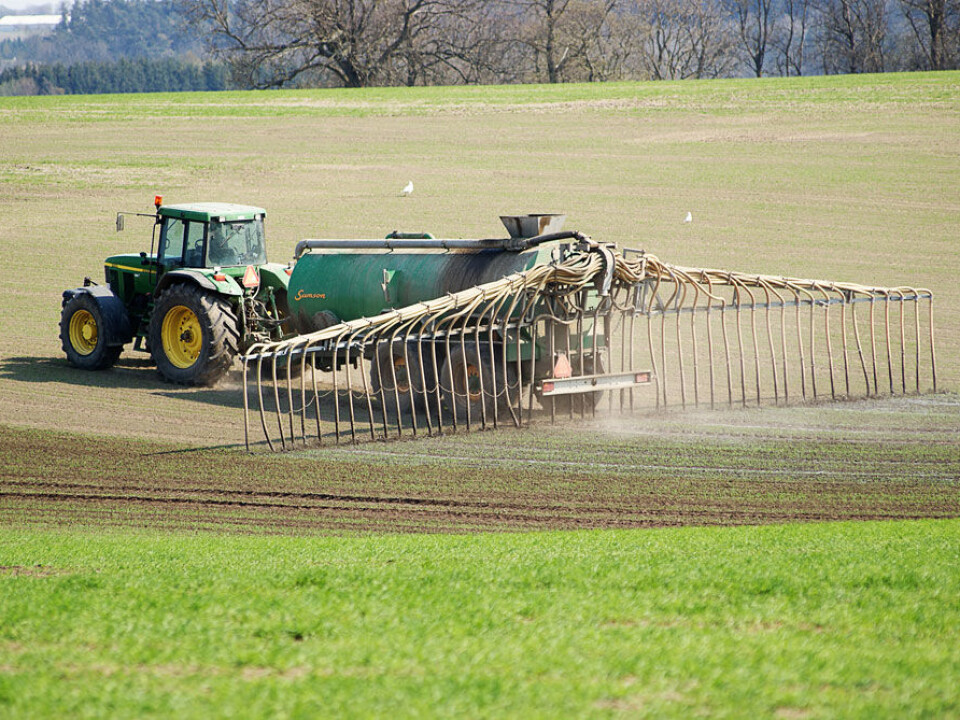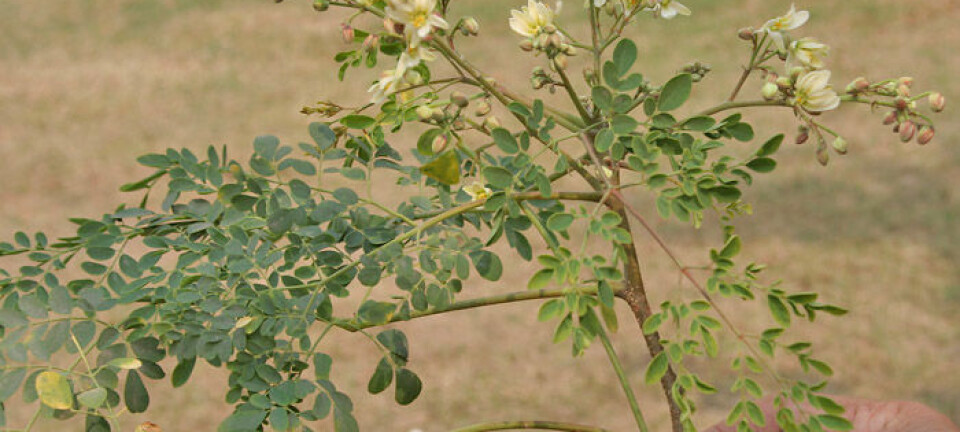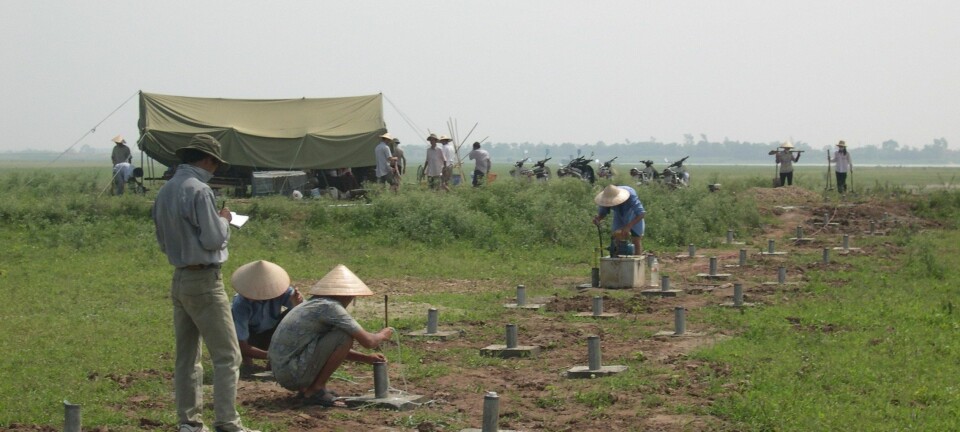
Harmful bacteria invade the groundwater
New research reveals that bacteria in farm slurry seep down to the groundwater before they can be broken down in the subsoil.
In summer 2010, the water supply in a Danish town was contaminated with the coliform bacterium Campylobacter. Sixty-five citizens became ill as a result.
These bacteria are typically present in the dung of pigs and cattle, and the town authorities theorised that the bacteria came from slurry that some days previously had been spread on fields in the area. But water samples collected from the fields showed no trace of the bacteria.
Now a new study from the PATHOS research centre, involving the Danish Geological Survey GEUS, the University of Copenhagen and Aarhus University, indicates a possible explanation.
"Our study shows that problematic bacteria from slurry can rapidly sink through the subsoil to the uppermost layer of groundwater , if it rains soon after the slurry has been spread," says Professor Carsten Suhr Jacobsen, who directed the study.
Bacteria fast-tracked underground

It was previously thought that the groundwater reservoirs were well-protected against harmful bacteria from the surface environment, because the bacteria are consumed by microorganisms before they can penetrate down to the groundwater.
But it now appears that if slurry is spread on soil containing fractured chalk and clay, these can serve as shortcuts to channel bacterially-contaminated rainwater down to the groundwater in the space of a few days. This is faster than the various microorganisms in the soil can devour the bacteria.
The research team obtained their results from studies conducted on clay-rich test fields, which were equipped with drainpipes at a depth of one metre, where water is found that can be characterised as groundwater. The research team periodically collected water samples from the pipes and analysed them for a particular species of coliform bacteria.
Field studies
In the first series of tests, water samples were taken from the drainpipes for a whole year on fields where slurry had not been spread. All tests for the coliform bacteria under study proved negative.
Farmers can avoid contaminating the upper groundwater with problematic bacteria by treating their slurry in a biogas plant which heats the slurry up. This heat, which can be extracted for domestic heating, effectively kills the problematic bacteria, so that the slurry is no longer a health risk.
The following year, slurry was spread on the fields ahead of expected heavy rainfall. Some days after the rainfall had occurred, samples taken from the groundwater in the fields showed the presence of large numbers of the coliform bacteria of interest.
"After the slurry was spread, a sharp peak occurred in the number of bacteria in question," says Jacobsen. "Our results show that these bacteria from slurry can contaminate the upper groundwater at levels up to 20,000 times higher than the threshold level. This happens only if it rains, and after 14 days the bacteria are consumed so that the source can no longer be traced."
Focus on resistant bacteria
The coliform bacteria that were the focus of the study are not harmful to humans, but act as a good indicator of whether the water is contaminated. If this species of bacterium is present, the water will in all likelihood contain other bacteria that can be harmful.
The particular feature of the coliform bacteria studied is that they are resistant to the most-used antibiotic in pigs – tetracycline – which many farmers use on sick animals. Tetracycline has the effect of promoting the formation of resistant bacteria, which subsequently find their way into the slurry spread on the fields.
Professor Jacobsen is concerned that so many resistant bacteria are found in the upper groundwater. Although the particular bacteria that his research team studied was not harmful to humans, other resistant bacteria can be.
Encouraging farmers to react.
"Farmers can avoid contaminating the upper groundwater with problematic bacteria by treating their slurry in a biogas plant which heats the slurry up," he says. "This heat, which can be extracted for domestic heating, effectively kills the problematic bacteria, so that the slurry is no longer a health risk."
But the responsibility lies not only with the farmers, he stresses, since the authorities can do more for the farmers, so that it becomes attractive to give the slurry heat treatment before it is taken out to the fields.
"Making biogas should be good business, rather than as it is now where there are associated costs," says the professor.
"The economic advantage should not be the only driver, however, but should be followed up with legislation from the authorities that requires farmers to pasteurise the slurry. That is the only way in which we can protect our drinking water from pathogenic bacteria in slurry."
------------------------------
Read this story in Danish at videnskab.dk
Translated by: Nigel Mander









